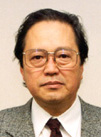
in recognition of his outstanding contributions to the study of plasma processes in the Earth's magnetosphere and as an international space science coordinator
Professor Atsuhiro Nishida began his scientific career by studying geomagnetic variations and introduced, together with his senior colleague, Tatsuzo Obayashi, a particular type, called DP2, which is the signature of magnetospheric convection directly driven by the interaction of the interplanetary magnetic field with the magnetosphere. The process dominating this interaction is magnetic reconnection. Consequently, Professor Nishida concentrated much of his subsequent work on the study of the wide range of manifestations of this process in the front- and nightside magnetosphere and of its impact on the dynamics of the magnetospheric and ionospheric plasmas including substorms. When in the 1980's Japan agreed with the United States to build the Geotail spacecraft for the International Solar-Terrestrial Physics Programme, Professor Nishida became the lead scientist and thus received the opportunity to study the action of reconnection in the Earth's magnetotail. This mission was highly successful in identifying the formation and ejection of so-called plasmoids and other basic dynamical processes of the tail including a wide range of wave-particle interactions. Professor Nishida's work addressed many other issues like the diffusion and acceleration of radiation belt particles and the Jovian magnetosphere. He held various offices and received many honors and awards. He published more than 160 papers in refereed journals and three books, one of which received the award as the best professional and scholarly book of 1998 in physics and astronomy. From 1996 till 2000 he was also Director General of the Institute of Space and Astronautical Science (Japan). During this period ISAS was able to launch several major space missions, such as NOZOMI, a mission to planet Mars.
Response:
It is a distinct honor to receive a Medal that is named after the great
European scientist, Prof. Hannes Alfvén. His name has been dear to
me since I entered the graduate school of the University of Tokyo in 1958,
where the first thing I did was to read his book "Cosmical
Electrodynamics." His book, as well as Professor Dungey's,
formed the very basis of myself as a space physicist. This was a
time when a new paradigm of magnetospheric physics was being established,
and I was so fortunate that I could play some small role in its
development.
Throughout my career I have had the good fortune of collaborating with scientists all over the world. It was a great pleasure to work out the ISTP/Geotail project with these international colleagues and to cultivate friendships in the process. I am most grateful to the EGS for recognizing not only my scientific contributions but also my role in international cooperation.